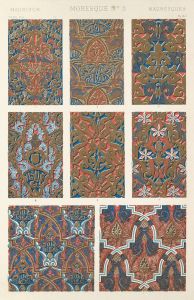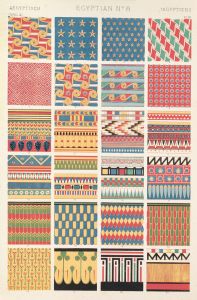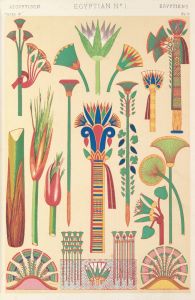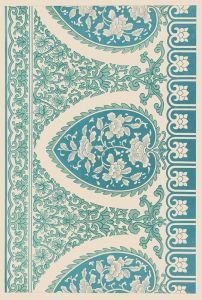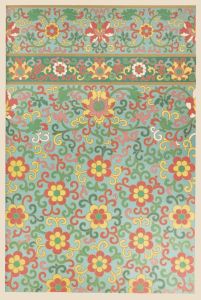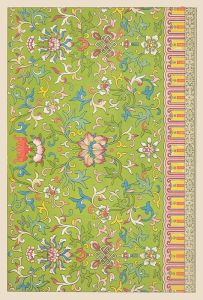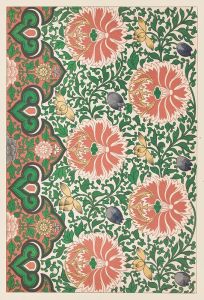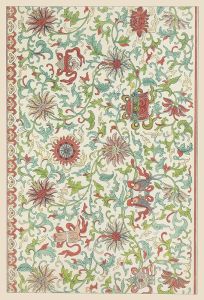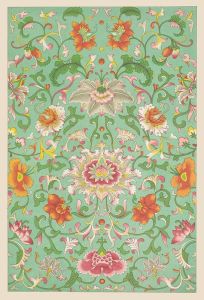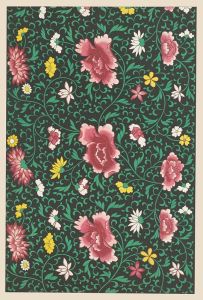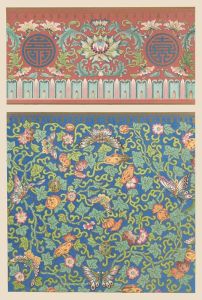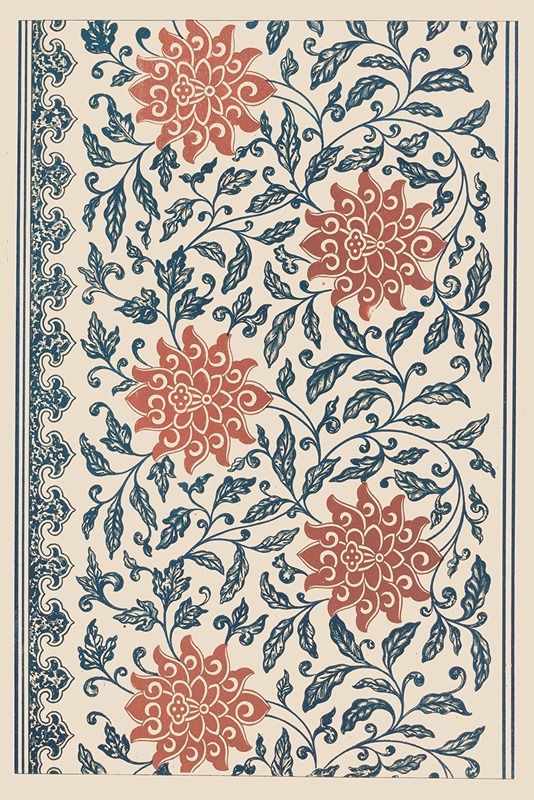
Examples of Chinese ornament, Pl.41
A hand-painted replica of Owen Jones’s masterpiece Examples of Chinese ornament, Pl.41, meticulously crafted by professional artists to capture the true essence of the original. Each piece is created with museum-quality canvas and rare mineral pigments, carefully painted by experienced artists with delicate brushstrokes and rich, layered colors to perfectly recreate the texture of the original artwork. Unlike machine-printed reproductions, this hand-painted version brings the painting to life, infused with the artist’s emotions and skill in every stroke. Whether for personal collection or home decoration, it instantly elevates the artistic atmosphere of any space.
"Examples of Chinese Ornament, Pl.41" is a plate from the influential design book "The Grammar of Ornament" by Owen Jones, first published in 1856. Owen Jones was a British architect and designer known for his theories on color, form, and decoration. His work significantly influenced the development of design in the 19th century.
"The Grammar of Ornament" is a comprehensive collection of design patterns and motifs from various cultures around the world, including Egyptian, Persian, Greek, Roman, Indian, and Chinese. The book aimed to provide a systematic study of ornamental art and serve as a reference for designers and architects. It is divided into 37 chapters, each focusing on a different style or period of ornamentation.
Plate 41, titled "Examples of Chinese Ornament," showcases a variety of traditional Chinese decorative motifs. These designs reflect the rich cultural heritage and artistic traditions of China, which have evolved over thousands of years. Chinese ornamentation is characterized by its intricate patterns, symbolic meanings, and the use of vibrant colors.
The motifs in Plate 41 include floral patterns, geometric shapes, and representations of mythical creatures such as dragons and phoenixes. These elements are commonly found in Chinese art and architecture, including temples, palaces, textiles, and ceramics. The use of these motifs often carries symbolic meanings; for example, the dragon is a symbol of power and strength, while the phoenix represents beauty and grace.
Jones's depiction of Chinese ornamentation in "The Grammar of Ornament" is notable for its accuracy and attention to detail. He meticulously studied and reproduced these designs to ensure they were faithful to the original sources. This was part of his broader effort to document and preserve the diverse artistic traditions of different cultures.
"The Grammar of Ornament" was widely acclaimed upon its release and has remained an important reference work for designers, artists, and historians. It played a crucial role in the dissemination of non-Western design principles in Europe and contributed to the appreciation and understanding of global decorative arts.
In summary, "Examples of Chinese Ornament, Pl.41" by Owen Jones is a detailed and accurate representation of traditional Chinese decorative motifs. It is part of a larger work that has had a lasting impact on the field of design and continues to be a valuable resource for those interested in the history and application of ornamental art.






